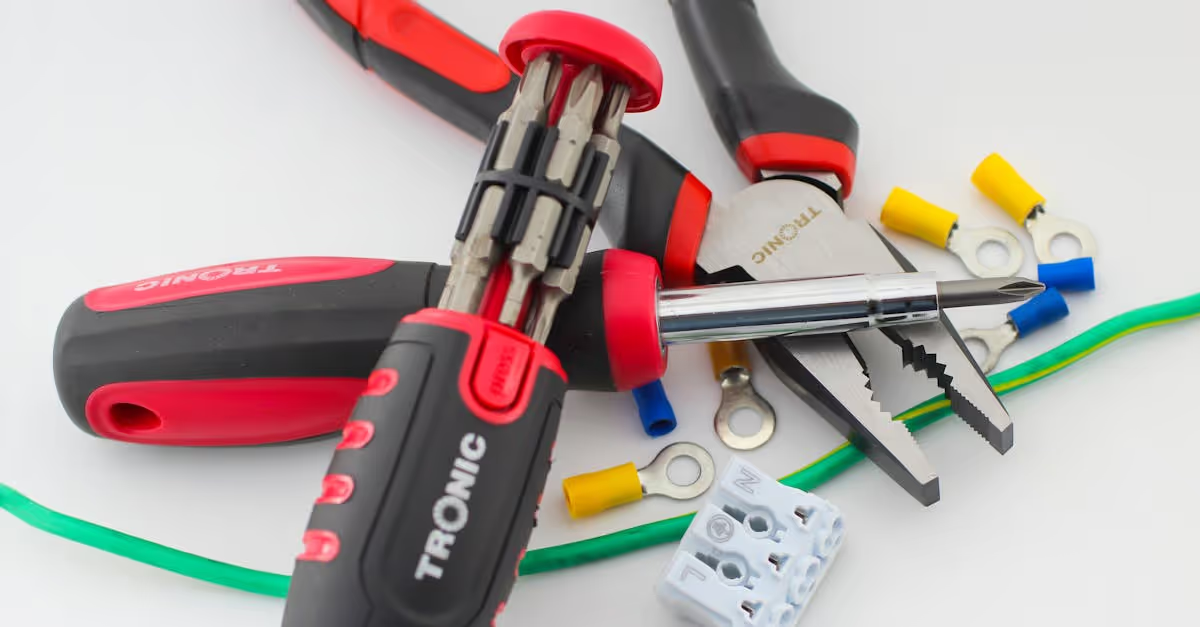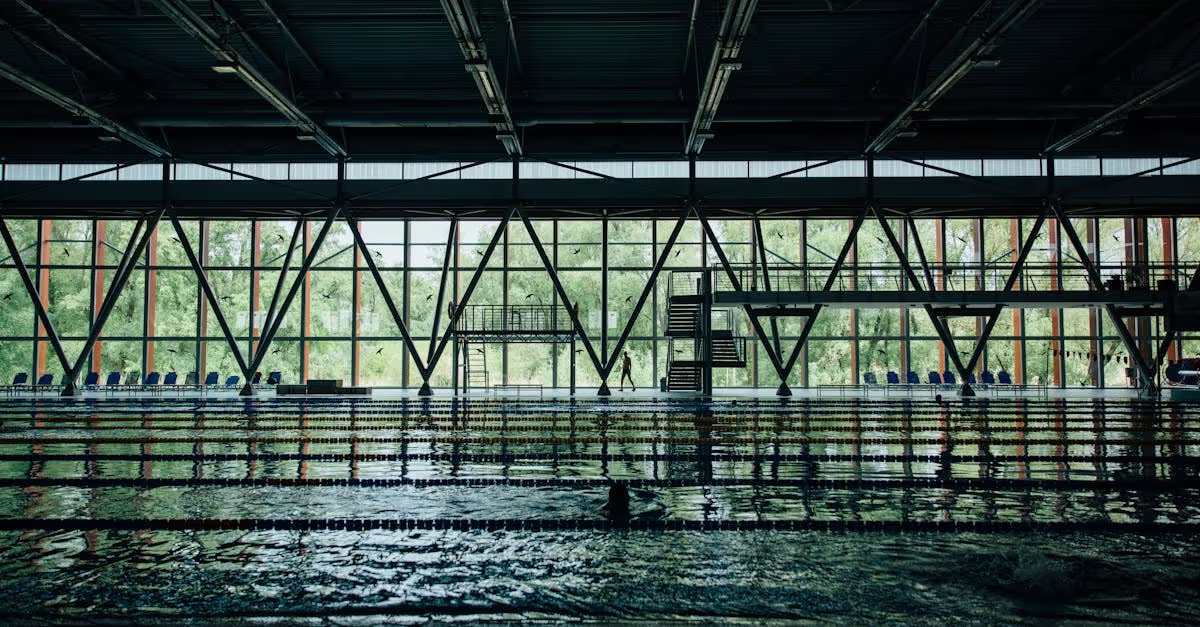Key Takeaways
- Cost-Effective Solution: DIY installation kits for pool covers save money compared to hiring professionals, allowing pool owners to invest in more maintenance resources.
- Convenience and Flexibility: These kits enable owners to install covers at their own pace, whether on weekends or in the evenings, fitting into their schedules seamlessly.
- Satisfaction from DIY: Successfully completing the installation boosts confidence and provides a sense of achievement, making it a rewarding project.
- Potential Challenges: DIY installations can be time-consuming and may present learning curves, especially for beginners. Instructions must be followed carefully to avoid installation issues.
- Quality Matters: Not all DIY kits have the same quality; researching brands and checking reviews can help ensure a better purchase.
- Effective Installation Tips: Proper preparation, such as gathering tools and taking precise measurements, is critical for a successful and efficient installation.
As pool owners, we all know the importance of maintaining our backyard oasis. Did you know that using a pool cover can reduce water evaporation by up to 90% and save on heating costs? With DIY installation kits for pool covers, we can take control of our pool maintenance while saving money.
Overview of DIY Installation Kits for Pool Covers
DIY installation kits for pool covers offer a practical solution for pool owners looking to maintain their pools effectively and affordably. These kits typically include all necessary materials, such as pool cover fabric, straps, anchors, and sometimes even tools for installation. The convenience of these kits allows us to take control of our pool maintenance.
Pros of DIY Installation Kits
- Cost-Effective
DIY kits often save us money compared to professional installation. The cost of hiring a contractor adds up quickly, while a kit can range from $100 to $500, depending on the type and size of the pool.
- Flexibility
We can install these kits at our convenience. Some of us prefer to work on the weekends, while others might enjoy an evening project. Having the option to do it ourselves allows for that choice.
- Satisfaction
Successfully completing the installation yields a sense of accomplishment. There's something about taking on the task ourselves that just feels good—like conquering a mountain, even if that mountain is, well, just our backyard.
Cons of DIY Installation Kits
- Time-Consuming
Installing a pool cover can take between 2 to 5 hours. For those of us who are less handy, this might feel more like a marathon than a sprint.
- Learning Curve
We might encounter challenges, especially if we aren’t familiar with the setup. Instructions can be confusing, but many manufacturers provide online videos that guide us through the process.
- Quality Variations
Not all DIY kits offer the same quality. Some materials may degrade faster than expected. Researching brands and reading reviews can help us avoid pitfalls.
Installation Tips
- Read Instructions Carefully
We should follow the provided instructions meticulously. Skipping steps or misreading can lead to an ineffective install.
- Gather Tools Ahead of Time
Before starting, assembling any needed tools like drills or wrenches helps streamline the process. Having a well-organized workspace makes the job easier.
- Get Help
Having a buddy to assist can make the installation smoother. Plus, it turns into a team effort. We can share a few laughs while tackling the task.
- Test the Cover
After installation, test the cover to ensure it fits securely. We want to avoid any surprises when it’s time to use our pool.
Pros of Using DIY Installation Kits
DIY installation kits for pool covers offer significant advantages that appeal to many pool owners. These kits streamline the installation process and present opportunities for savings and convenience.
Cost-Effectiveness
DIY installation kits for pool covers provide a budget-friendly alternative to professional installation. Using these kits generally leads to savings, as they feature a lower initial cost compared to automatic pool covers, which can range from $10,000 to $20,000. By handling the installation ourselves, we eliminate labor costs that come with hiring professionals, making the entire project more manageable. Our wallets appreciate the difference! The affordability of these kits can also allow us to invest in other pool maintenance necessities, like chemicals or equipment upgrades. Imagine up to 90% less water evaporation and lower heating expenses—our kits not only protect our pools but also boost our savings!
Cons of Using DIY Installation Kits
While DIY installation kits for pool covers offer several advantages, they also come with potential drawbacks. These cons can impact the effectiveness and longevity of the installation.
Potential for Poor Installation
DIY installation can lead to poor results if we overlook specific steps or misinterpret instructions. A small mistake during the setup might result in a cover that doesn't fit properly, leaving our pool exposed to debris or water evaporation. For instance, if we rush through measuring the dimensions, we might end up with a cover that is either too tight or too loose. This scenario isn't just an inconvenience; it can also lead to increased costs down the line. Think of it like trying to assemble a piece of furniture without reading the instructions. The end product may wobble and look great until we put anything on it.
Limited Warranty and Support
DIY kits often come with limited warranty and support options. Many manufacturers provide just basic guidelines and expect us to troubleshoot on our own. If an issue arises—like a snapped pool cover or a problem with the fit—finding assistance may be challenging. Professional installations typically include comprehensive warranties, where any flaw is addressed by experts. In contrast, with our DIY kit, if something goes wrong, we’re left navigating the repair process alone. This lack of support can add frustration, especially if problems persist. It's like getting a tech gadget with only a user manual written in a foreign language; good luck finding help!
Being aware of these cons helps us make informed choices as we embark on our pool cover installation journey.
Installation Tips for DIY Pool Cover Kits
Installing a DIY pool cover kit can be straightforward with the right approach. We can navigate the process effectively by following a few core tips.
Tools You Will Need
Gather these essential tools for a smooth installation experience:
- Pool Cover Reel Kit: This typically contains all necessary components.
- Drill and Drill Bits: For creating required holes.
- Screwdriver: A multi-bit screwdriver simplifies various tasks.
- Measuring Tape: Accuracy is key, so precise measurements are vital.
- Pencil: For marking measurements with clarity.
- Level: A standard level works, or opt for a laser level for enhanced accuracy.
- Anchors or Screws: Check if included, as these are crucial for securing the cover.
- Wrench: Needed for specific models.
Having everything on hand prevents frustration and allows us to focus on the task.
Step-by-Step Installation Process
Follow these steps for effective installation:
- Choose the Location: Place the reel at one end of the pool, ideally near a corner to simplify access.
- Prepare the Site: Clean the installation area. Clear away debris or obstacles.
- Measure Carefully: Use the measuring tape to ensure correct placement of the reel.
- Mark Anchor Points: Use the pencil to mark where the anchors or screws will go.
- Drill Holes: Employ the drill and appropriate bits, ensuring we drill at marked points.
- Secure the Reel: Attach the reel using screws or anchors we’ve collected.
- Test Fit: Lay the cover over the pool and adjust for a proper fit.
By remaining diligent in following the steps, we see successful results and enjoy our pool with a reliable cover.
Conclusion
Choosing a DIY installation kit for pool covers can be a game changer for pool owners. It not only saves us money but also gives us the satisfaction of completing a project ourselves. While the process may have its challenges like time and potential installation errors we can overcome these with careful planning and the right tools.
By weighing the pros and cons we can make informed decisions that best suit our needs. With the right approach and attention to detail we can enjoy the benefits of a well-installed pool cover that enhances our pool maintenance routine. Let's take the plunge and make our pool experience even better.
Frequently Asked Questions
What are the benefits of using a pool cover?
Pool covers can reduce water evaporation by up to 90% and lower heating costs. They also keep debris out, making pool maintenance easier. Overall, using a pool cover can lead to significant savings and a cleaner pool.
Can I install a pool cover myself?
Yes, many pool covers come with DIY installation kits that include all necessary materials. These kits allow you to save on labor costs and offer the flexibility to choose your installation schedule.
What tools do I need for DIY pool cover installation?
Essential tools for installing a DIY pool cover include a pool cover reel kit, drill, screwdriver, measuring tape, and anchors. Gathering these tools beforehand will make the installation process smoother.
Are there downsides to DIY pool cover kits?
The potential downsides include the time required for installation and the learning curve for those unfamiliar with the process. Poor installation can lead to improper fitting, exposing the pool to debris and evaporation.
How much does professional pool cover installation cost?
Professional installation can be expensive, especially for automatic pool covers, which typically range from $10,000 to $20,000. Opting for a DIY installation can provide significant cost savings.
What should I do if I encounter issues during installation?
If you face problems during installation, refer back to the instructions that came with your kit. However, many DIY kits come with limited support, so it’s essential to follow all steps carefully to avoid issues.
What is the best way to ensure a secure fit after installation?
To ensure a secure fit after installation, test the cover by checking for even tension and proper alignment. Make any necessary adjustments to prevent gaps and ensure adequate protection.





